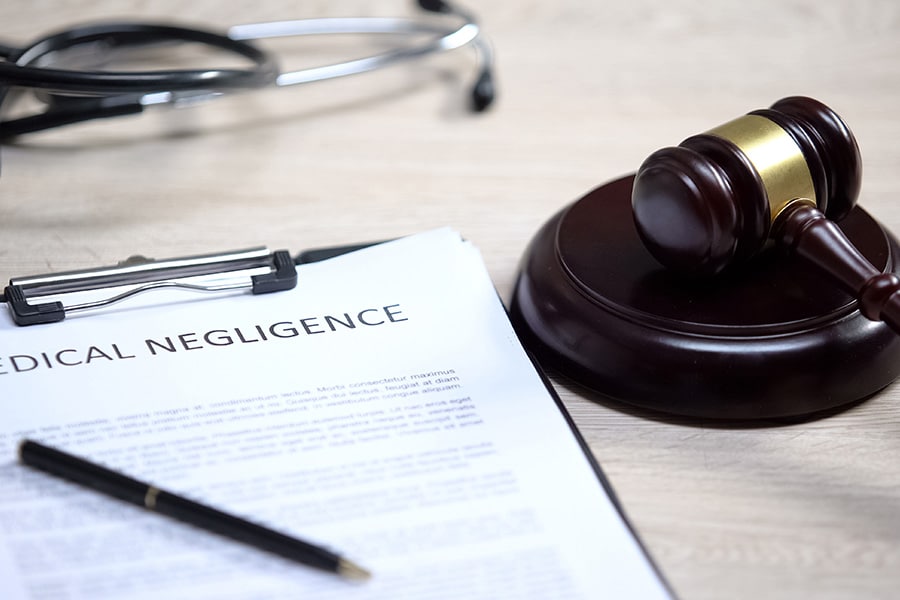Imagine this: A drunk driver runs a red light and T-bones your car in downtown Birmingham. You suffer broken ribs, a concussion, and months of physical therapy. The drunk driver was arrested, blew twice the legal limit, and admitted fault to police. Your case seems like a slam dunk. But then the insurance company claims you were going 3 mph over the speed limit. In Alabama, that could mean you get absolutely nothing. Zero. Not even your medical bills.
Welcome to Alabama contributory negligence law – the harshest accident law in America that turns victims into villains every single day.
Understanding Alabama’s Pure Contributory Negligence Rule
Alabama is one of only five jurisdictions that still follows pure contributory negligence, along with Maryland, North Carolina, Virginia, and Washington D.C. While 45 other states use fair systems that reduce your compensation based on your percentage of fault, Alabama takes an all-or-nothing approach. If you’re even 1% responsible for your accident, you lose everything.
Michael Strickland, founding attorney at Strickland Law Group with over 30 years of fighting this unfair law, puts it bluntly: “I’ve seen cases where drunk drivers walked away paying nothing because the victim forgot to turn on their headlights at dusk. It’s a law that protects wrongdoers and punishes innocent people for being human.”
This means if someone else is 99% at fault and you’re 1% at fault, they pay you nothing. The drunk driver who hit you pays nothing. The texting teenager who rear-ended you pays nothing. The company whose truck driver fell asleep at the wheel pays nothing. All because you made some tiny contribution to the accident.
How Insurance Companies Weaponize the 1% Fault Rule Against You
Insurance companies love Alabama’s contributory negligence law because it gives them countless ways to deny valid claims. They’ve turned finding that 1% of fault into an art form, and they start looking for it the moment you file a claim.
Their investigators immediately search for any possible way to blame you. They’ll argue you could have reacted faster, should have seen the danger coming, were driving too fast for conditions (even under the speed limit), or failed to take evasive action. They hire accident reconstruction experts whose only job is to find some tiny way you contributed to the crash.
Michael Strickland, partner at Strickland Law Group who has tried over 100 cases, knows their playbook: “Insurance companies will spend $50,000 on experts to avoid paying a $100,000 claim. They know that finding just 1% of fault saves them everything. That’s why you need lawyers who know how to fight back with equal force.”
Common Tricks Insurance Companies Use to Assign Blame in Alabama
The creativity insurance companies show in blaming victims would be impressive if it weren’t so destructive. Here are their favorite tactics that destroy legitimate claims every day across Montgomery, Birmingham, and Huntsville.
The Seatbelt Defense
While Alabama law states that failure to wear a seatbelt cannot be considered contributory negligence, insurance companies still try to use it indirectly. They argue that your injuries would have been less severe with a seatbelt, attempting to reduce the value of your damages or suggest you were generally careless.
The “Last Clear Chance” Manipulation
Insurance companies twist this legal doctrine that’s meant to help victims. They claim that even if someone else caused the danger, you had the “last clear chance” to avoid it. They’ll argue you should have swerved, braked harder, or somehow predicted the other driver’s illegal behavior. They use this even in rear-end collisions, claiming you stopped too suddenly.
The Speed Trap
Going even 1 mph over the speed limit becomes “contributory negligence.” They’ll also claim you were driving “too fast for conditions” even if you were under the limit. Rain, darkness, or traffic become excuses to blame you for not driving slowly enough to avoid their client’s negligence.
The Distraction Accusation
They’ll claim you were distracted without any proof. Adjusting your radio, talking to a passenger, or even looking at your mirrors becomes “distraction” that contributed to the accident. They’ll subpoena your phone records hoping to find a text or call near the accident time.
Real Cases Where Alabama’s Contributory Negligence Law Shocked Victims
These aren’t hypothetical scenarios – they’re real situations Alabama accident victims face every day. A Birmingham teacher was hit by a commercial truck that ran a stop sign. She lost her claim because she was changing radio stations. The truck driver admitted running the stop sign, but her “distraction” meant she got nothing for her spinal injuries.
A Montgomery grandfather was struck in a crosswalk by a speeding driver. The insurance company successfully argued he was 1% at fault for wearing dark clothing at dusk. His medical bills exceeded $200,000, but he received zero compensation.
A Huntsville nurse was rear-ended at a red light by someone texting. The insurance company claimed she stopped too suddenly when the light turned yellow, contributing to the crash. Despite needing neck surgery, she lost her entire claim.
These cases show why having experienced trial lawyers matters. Strickland Law Group has successfully defended hundreds of clients against contributory negligence claims, knowing exactly how to counter these unfair tactics.
How to Protect Your Claim from Contributory Negligence Attacks
Protecting yourself starts the moment an accident happens. Everything you say and do can be twisted against you later. Here’s how to safeguard your right to compensation.
At the Accident Scene
Never admit fault or say “I’m sorry” – even being polite can be used against you. Stick to facts when talking to police. Don’t speculate about what happened or what you could have done differently. If asked about speed, say “I was driving safely” rather than guessing numbers.
Take photos of everything, especially things that show the other driver’s fault like skid marks, traffic signs, or their position. Get witness information immediately – they can confirm you did nothing wrong.
When Dealing with Insurance Companies
Don’t give recorded statements without a lawyer. Insurance adjusters are trained to ask questions that trick you into admitting some fault. “Could you have stopped sooner?” sounds innocent but is designed to get you to accept blame.
Never sign anything from insurance companies without legal review. They often include language where you admit partial fault without realizing it. Don’t accept quick settlement offers – they’re usually made before you understand your rights.
Building Your Defense Against False Blame
Document everything that proves you drove safely. If your car has a dashcam, preserve the footage immediately. Get the police report and make sure it’s accurate – officers sometimes make mistakes that insurance companies exploit.
Seek medical treatment immediately and follow all doctor’s orders. Insurance companies use delays or missed appointments to argue your injuries aren’t serious or that you contributed to making them worse.
Why Strickland Law Group Can Beat Contributory Negligence Claims
Not all lawyers understand how to fight contributory negligence claims. It takes specific experience and strategies that Strickland Law Group has developed over three decades. They know how to prove the other driver’s actions were the sole cause of the crash, challenge bogus expert opinions with their own respected experts, and present evidence that eliminates any question of shared fault.
Their record speaks for itself – over $1 billion recovered despite Alabama’s harsh law. They’ve won cases other lawyers said were impossible because of contributory negligence issues. Their willingness to go to trial forces insurance companies to think twice before making unfair blame accusations.
Legal Exceptions That Could Save Your Case
While Alabama’s contributory negligence law is harsh, there are important exceptions. Children under 7 cannot be considered negligent at all. Children between 7 and 14 are presumed incapable of contributory negligence, though this can be challenged. The “last clear chance” doctrine helps when the defendant had the final opportunity to avoid the accident but failed to act. If the at-fault party acted with wanton or reckless disregard for safety – like drunk driving or excessive speeding – you may still recover despite some contributory negligence.
Frequently Asked Questions About Alabama’s Contributory Negligence Law
Is Alabama really one of the only states with this law? Yes, Alabama is one of only five jurisdictions with pure contributory negligence (along with Maryland, North Carolina, Virginia, and Washington D.C.). Every other state uses comparative negligence, which is much fairer to accident victims.
Can contributory negligence apply to pedestrians and cyclists? Yes, and insurance companies are especially aggressive with these victims. They’ll claim pedestrians should have crossed elsewhere or cyclists should have been more visible. These vulnerable road users need strong legal protection against blame-shifting.
What if the other driver got a ticket or DUI? Criminal charges help but don’t guarantee you’ll win. Insurance companies still argue contributory negligence even when their client was clearly breaking the law. They only need to prove 1% fault on your part.
Can I still lose my case if the other driver admits fault? Yes. Insurance companies often disagree with their own client’s admission of fault. They’ll investigate independently and look for any contributory negligence, regardless of what their driver says.
How long do insurance companies have to claim contributory negligence? They can raise this defense anytime before trial, even years into your case. That’s why everything you do from day one matters. One wrong statement early on can destroy your case later.
Should I just give up if I might be partially at fault? Never. What you think is partial fault might not be legally relevant. Many clients think they’re partially to blame when they’re not. Only experienced lawyers can properly evaluate whether contributory negligence actually applies.
Don’t Let Alabama’s Unfair Law Steal Your Compensation
Alabama’s contributory negligence law is harsh, unfair, and designed to protect insurance companies instead of injured victims. But you don’t have to face it alone. With the right legal team, you can beat insurance companies at their own game and get the compensation you deserve.
Strickland Law Group has spent over 30 years fighting this unjust law and winning. They know every trick insurance companies use and how to defeat them. Don’t let insurance companies use Alabama’s contributory negligence law to deny your valid claim.
If you’ve been injured in an accident in Alabama, protect yourself from contributory negligence attacks. Call Strickland Law Group at 334-269-3230 for a free consultation. They’ll review your case, identify potential contributory negligence issues, and fight to ensure you get every dollar you deserve.
Legal Disclaimer: This blog post is for informational purposes only and does not constitute legal advice. While efforts have been made to ensure accuracy based on current Alabama law as of 2025, including verification that Alabama is one of five jurisdictions with pure contributory negligence laws, individual circumstances vary and laws can change. The case examples provided are illustrative. Specific information about Strickland Law Group, including attorney experience, case results, and contact information, should be verified directly with the firm. Past results do not guarantee future outcomes. For legal advice regarding your specific situation, consult with a qualified Alabama personal injury attorney. No attorney-client relationship is created through reading this blog. Time limits apply to filing claims – seek legal consultation promptly to protect your rights.

